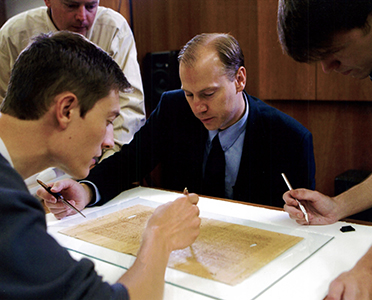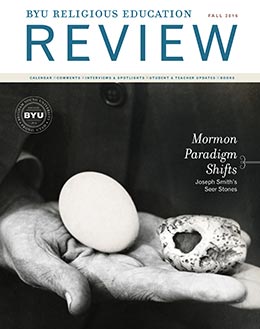Lincoln H. Blumell (lincoln_blumell@byu.edu) was an associate professor of ancient scripture at BYU when this was published.

Just over 1,600 years ago, in the late fourth century AD, a renowned Christian teacher named Didymus “the blind” taught in Alexandria. Though blinded as a child because of disease, Didymus overcame this impediment to become one of the leading Christian interpreters of scripture in his day. He was held in high regard far and wide and attracted students from all over the ancient Mediterranean world. They included the likes of the famous St. Jerome––the translator of the Latin Vulgate. When Didymus lectured, it is reported that stenographers would take copious notes so that his discourses on different books of the Bible could circulate far and wide. When Didymus died in about AD 398, he left behind a large body of texts that included biblical commentaries and various theological treatises.
In his own day, Didymus was regarded as fully orthodox, but as a result of fifth-century controversies in the ancient Christian Church, he was posthumously anathematized––among others things he had espoused a doctrine of the preexistence of the soul, for which he was condemned. As a result, his writings fell into disuse and were no longer copied by Christians of later centuries; thus he was all but forgotten. In 1941 his posthumous fortunes dramatically changed when a crew of Allied engineers stationed in Egypt stumbled across a large cache of his writings while surveying a cave system in Tura (just south of Cairo). Following WWII, the bulk of these papyri were sold on the antiquities market and landed in collections in Cologne, Geneva, and London and were published shortly thereafter. One group of papyri, which never made their way onto the antiquates market, was sent by one of the American engineers, who had been a part of the initial discovery, to a relative in Boston for safekeeping. There they sat in an attic for nearly thirty years pressed between the pages of a large family book. Upon the death of this relative in the early 1980s, his widow, who was a convert to the LDS Church, cleaned the attic and came upon these papyri. Unsure of what to do, she approached her home teacher. He first took them to Harvard University, who initially did not show much interest, and then afterward he contacted BYU.
Hugh Nibley was first approached to see if BYU might be interested in the papyri and followed by Tom Mackay. The latter immediately expressed great enthusiasm once he recognized their value. In December of 1984, BYU purchased these papyri, which consisted of twenty-two pages of Greek text that belonged to Didymus’s lectures on Psalms 20–29. Work on deciphering the papyri commenced but proceeded at a slow pace and was delayed for various reasons with intermittent stoppages and faculty turnover. In 2011 I began work on these papyri as the lead editor. Drawing upon the work of previous editors, I am very pleased to say that five years later, a volume has been completed that includes a transcription, translation, and commentary of this material that has been submitted for publication. This section of Didymus’s commentary on the Psalms reveals much about his biblical interpretation and will be of great interest to scholars of early Christianity. It is remarkable that BYU possesses such an ancient treasure and that it can finally see the light of day after some 1,600 years.
